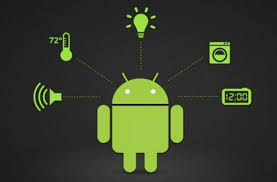info@gladsme.in
+91.8891968718
The Future of Technology: Exploring the Synergy Between Android and IoT
The Future of Technology: Exploring the Synergy Between Android and IoT

The digital age is upon us, and with it comes the convergence of two revolutionary technologies: Android and the Internet of Things (IoT). This blog explores how these two giants are merging to create a future that is smarter, more connected, and infinitely more convenient. From smart homes to wearable technology, the synergy between Android and IoT is reshaping the world as we know it.
What is IoT?
The Internet of Things (IoT) refers to the network of physical devices embedded with sensors, software, and other technologies, aimed at connecting and exchanging data with other devices and systems over the internet. These devices range from ordinary household objects to sophisticated industrial tools.
The Role of Android in IoT
Android, the world's most popular operating system, has become a pivotal platform in the development and operation of IoT devices. Its open-source nature, widespread adoption, and robust development community make it an ideal partner for IoT applications. Here's how Android enhances IoT:
Seamless Connectivity: Android devices can effortlessly connect and communicate with a wide array of IoT devices, enabling smooth integration and control.
Customizability: Developers can tailor Android to meet the specific needs of various IoT applications, from home automation systems to health monitoring devices.
Scalability: Android's flexibility allows it to be used in devices of all sizes and capabilities, from small sensors to complex smart appliances.
Security: Android's built-in security features help protect IoT devices from vulnerabilities and cyber threats.
Applications of Android in IoT
The integration of Android and IoT is driving innovation across various sectors. Here are some notable applications:
Smart Homes: Android-powered smart devices, such as thermostats, security cameras, and lighting systems, are transforming homes into intelligent, automated environments.
Healthcare: Wearable health monitors and medical devices running on Android provide real-time health data, enhancing patient care and enabling remote monitoring.
Industrial Automation: Android-based control systems and sensors are improving efficiency and safety in manufacturing and industrial operations.
Transportation: Connected vehicles and Android applications are enhancing navigation, safety, and entertainment in the automotive industry.
Challenges and Future Prospects
While the combination of Android and IoT holds immense potential, it also presents challenges. These include security concerns, interoperability issues, and the need for robust data management solutions. However, ongoing advancements in technology and collaborative efforts among industry stakeholders are paving the way for a more connected and secure IoT ecosystem.
The fusion of Android and IoT is a testament to the limitless possibilities of modern technology. As these two domains continue to evolve, they will unlock new levels of innovation, convenience, and efficiency, transforming everyday life and driving us towards a smarter future. Embrace the synergy between Android and IoT, and witness the dawn of a new technological era.
Related Blogs

The Importance of Data Structures in Software Development
Read More...
Exploring Machine Learning Algorithms: A Beginner's Guide
Read More...
The Evolution of Programming Languages: From Assembly to Rust
Read More...
Understanding Big O Notation: A Guide for Developers
Read More...Subscribe for our Newsletter
Subscribe to elevate your software game! Stay updated on the latest trends, coding insights, and exclusive promotions with our newsletter.
